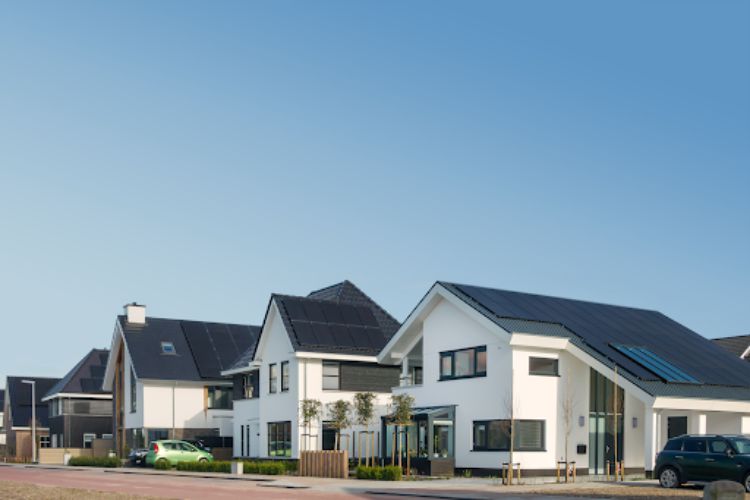The decision to switch to solar energy can be a daunting one for homeowners. There’s a common misconception that installing solar panels is an expensive, one-time investment that doesn’t pay off quickly. However, with growing awareness of solar energy’s long-term benefits, more people are realizing that going solar is not just an environmentally conscious decision—it’s a financially sound one, too. Understanding the costs of solar energy is crucial in making the right decision for your home and your budget.
In this article, we’ll break down the various factors that influence the cost of solar panels, potential savings over time, and what homeowners should know before making the leap into renewable energy. Whether you’re looking to reduce your energy bills or make a positive environmental impact, understanding the cost of solar is the first step.
 Understanding the Costs of Solar Energy
Understanding the Costs of Solar Energy
At first glance, the cost of installing solar panels can seem high. According to the Solar Energy Industries Association (SEIA), the average cost for residential solar installations in the U.S. ranges from $15,000 to $25,000 before any tax credits or incentives. This price may vary depending on the size of your home, your location, and the quality of the panels. However, there are multiple factors that can impact this cost:
1. The Size of Your Solar System
The size of your solar system plays a major role in determining the overall price. A small, single-family home might need between 10 to 20 solar panels, depending on energy consumption. Larger homes or those in regions with higher electricity demands might require more panels. The cost of solar systems typically breaks down to about $2.50 to $3.50 per watt, meaning that a 5kW system can cost between $12,500 and $17,500 before tax credits.
2. Quality of Solar Panels
Not all solar panels are created equal. Premium panels, such as those from top manufacturers, can cost more, but they also tend to be more efficient. These high-efficiency panels generate more power per square foot, which can lead to greater long-term savings. While they may come with a higher upfront price, the energy savings over time often outweigh the initial investment.
3. Installation Costs
Solar panel installation costs can vary greatly depending on your home’s location, the complexity of the installation, and the installer’s expertise. While installation costs used to be a significant portion of the total system price, improvements in solar technology and increased competition in the market have lowered these costs over the years. On average, installation costs make up about 10 to 20% of the total system cost.
4. Permitting and Inspection Fees
In addition to the installation, homeowners are responsible for local permitting fees and inspections. These fees can vary significantly based on local laws and regulations. Depending on where you live, this can add anywhere from $500 to $2,000 to the cost of your solar panel system.
5. Incentives and Tax Credits
The good news is that the cost of going solar can be reduced by various federal, state, and local incentives. In the U.S., the federal government offers a Solar Investment Tax Credit (ITC), which provides a 30% tax credit for solar installations through 2032. This means that if your system costs $20,000, you could receive a $6,000 tax credit, significantly reducing your upfront costs. Additionally, some states offer rebates or other incentives to make solar even more affordable. It’s crucial to check your local solar incentives to understand what you qualify for.
6. Financing Your Solar Installation
Not every homeowner can afford to pay for solar panels outright, but that doesn’t mean solar is out of reach. There are several financing options available to help spread the cost over time, including:
- Solar Loans: Many financial institutions offer loans specifically for solar installations. These loans often come with lower interest rates than traditional personal loans.
- Leases and Power Purchase Agreements (PPAs): In these models, a third-party company installs the solar panels on your home, and you either lease the system or agree to purchase the electricity generated at a fixed rate. While this option typically requires little to no upfront cost, it doesn’t allow homeowners to take advantage of tax credits or incentives.
7. Ongoing Maintenance Costs
Solar panels are generally low-maintenance systems, but like any technology, they require occasional upkeep. You’ll want to have your panels cleaned regularly, especially if you live in an area with dust, snow, or heavy rainfall. Most manufacturers offer warranties of 20 to 25 years, meaning you won’t have to worry about major repairs for quite a while.
That said, if something goes wrong—such as a panel being damaged from a storm—you may need to pay for repairs or replacement parts. Fortunately, the maintenance costs for solar systems are usually minimal compared to the savings they generate.
Long-Term Savings and Return on Investment
While the upfront cost of solar energy can be significant, the long-term savings are substantial. By switching to solar, you can reduce or even eliminate your monthly electricity bill, which can add up to significant savings over the years. On average, homeowners can save anywhere from $10,000 to $30,000 over the lifetime of their solar panel system.
A typical solar panel system lasts 25 to 30 years, and most homeowners see a return on investment within 7 to 10 years. After that, your system essentially pays for itself, and you’ll be generating free electricity for the remainder of the system’s life. Additionally, if you generate more electricity than you use, many utility companies offer net metering programs that allow you to sell excess power back to the grid, which can further offset the cost of installation.
The Benefits of Going Solar Beyond Cost Savings
While the financial benefits of solar energy are clear, there are several other compelling reasons to make the switch:
- Environmental Impact: Solar energy is a clean, renewable energy source that helps reduce your carbon footprint and dependence on fossil fuels.
- Energy Independence: You may protect yourself from escalating power prices and reduce your dependency on the grid by producing your own electricity.
- Increased Property Value: Homes with solar panels are increasingly seen as more valuable by buyers. Research shows that homes with solar panels sell for more than those without.
- Job Creation: The growing solar industry creates jobs in installation, manufacturing, and maintenance, contributing to the economy.
Choosing the Right Solar Company
When it comes to choosing a solar company, it’s essential to consider more than just the cost. You’ll want to partner with a reputable provider who can offer quality products and customer service. A company like Semper Solr, a veteran owned solar company, brings experience, trustworthiness, and a customer-first approach to every project. Whether you’re just starting your solar journey or looking to expand an existing system, working with a skilled provider ensures your investment is well-managed and maximized.
Final Thoughts
The cost of solar energy has dropped significantly over the past decade, making it an accessible and attractive option for homeowners. By understanding the factors that influence the cost and exploring available incentives and financing options, you can make an informed decision about whether solar is right for you. While the initial cost may seem high, the long-term savings, environmental impact, and other benefits make it a wise investment for many homeowners.
As solar energy continues to evolve, it’s important to stay informed about new technologies, financial incentives, and the best practices for installation and maintenance. With the right approach, you can enjoy the many advantages of solar energy while minimizing the costs.




